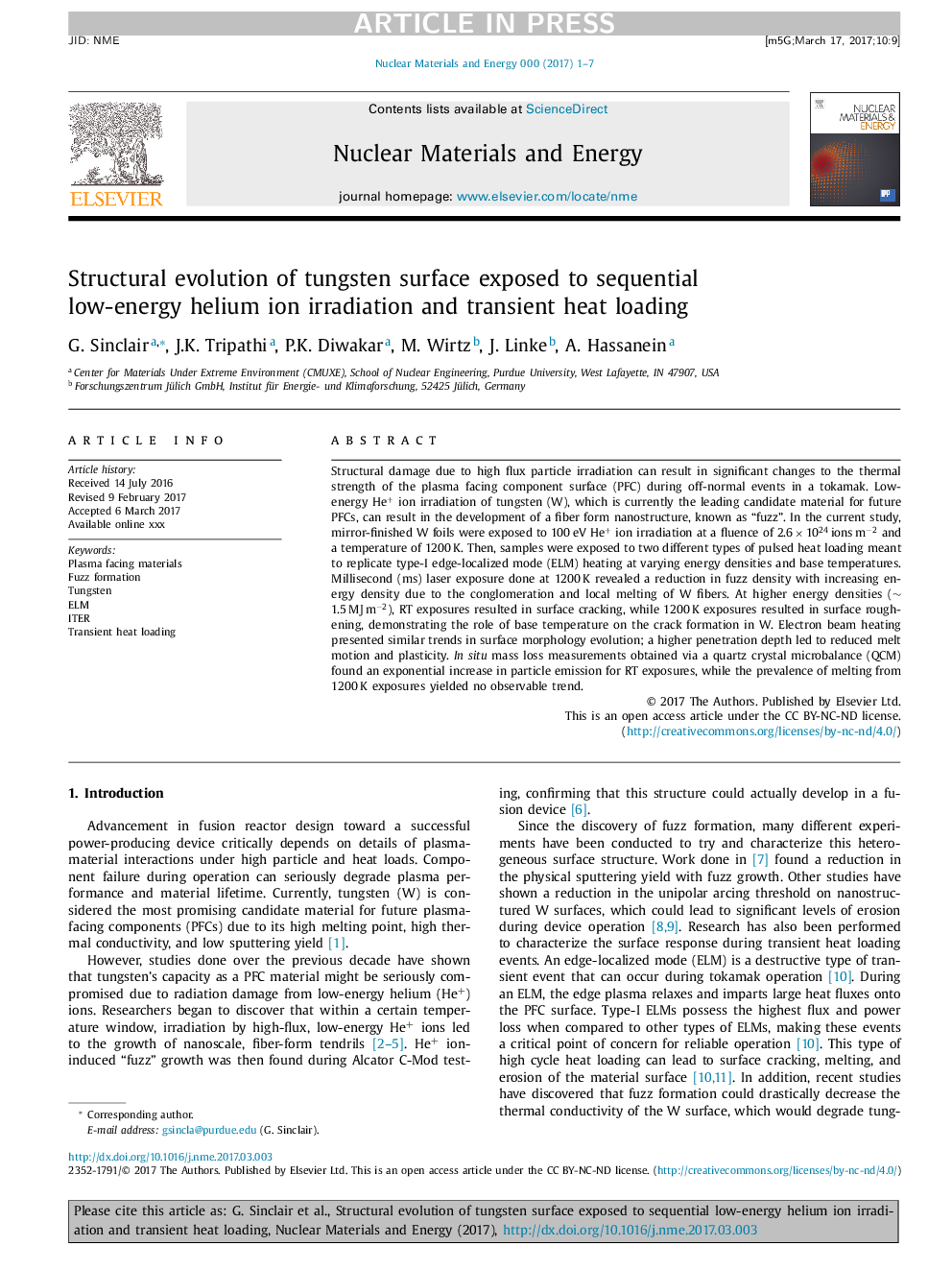| Article ID | Journal | Published Year | Pages | File Type |
|---|---|---|---|---|
| 7987502 | Nuclear Materials and Energy | 2017 | 7 Pages |
Abstract
Structural damage due to high flux particle irradiation can result in significant changes to the thermal strength of the plasma facing component surface (PFC) during off-normal events in a tokamak. Low-energy He+ ion irradiation of tungsten (W), which is currently the leading candidate material for future PFCs, can result in the development of a fiber form nanostructure, known as “fuzz”. In the current study, mirror-finished W foils were exposed to 100 eV He+ ion irradiation at a fluence of 2.6âà1024 ions mâ2 and a temperature of 1200 K. Then, samples were exposed to two different types of pulsed heat loading meant to replicate type-I edge-localized mode (ELM) heating at varying energy densities and base temperatures. Millisecond (ms) laser exposure done at 1200 K revealed a reduction in fuzz density with increasing energy density due to the conglomeration and local melting of W fibers. At higher energy densities (â¼ 1.5 MJ mâ2), RT exposures resulted in surface cracking, while 1200 K exposures resulted in surface roughening, demonstrating the role of base temperature on the crack formation in W. Electron beam heating presented similar trends in surface morphology evolution; a higher penetration depth led to reduced melt motion and plasticity. In situ mass loss measurements obtained via a quartz crystal microbalance (QCM) found an exponential increase in particle emission for RT exposures, while the prevalence of melting from 1200 K exposures yielded no observable trend.
Related Topics
Physical Sciences and Engineering
Energy
Nuclear Energy and Engineering
Authors
G. Sinclair, J.K. Tripathi, P.K. Diwakar, M. Wirtz, J. Linke, A. Hassanein,
